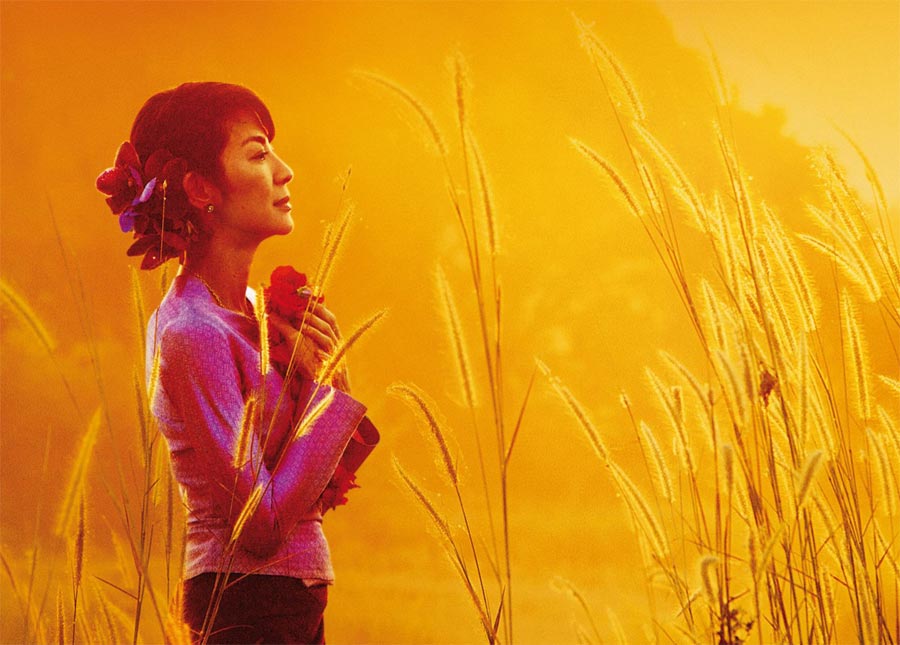The Lady (Luc Besson, 2011): USA
Reviewed by Brittany Carr. Viewed at AFI Film Festival 2011.
 The Lady was my favorite film of the entire festival. It was my second film of the festival, and I had seen all the advertising and the trailer for the film, but I was unsure how Luc Besson would bring the story together, since his style is a little different than how he directed this movie. The Lady blew me out of the water. I felt so horrible that I had not heard of of Aung San Suu Kyi’s story, and especially since the whole ordeal in Burma has been going on since before I was born. I was so moved by her story, I was crying by the end of the film.
The Lady was my favorite film of the entire festival. It was my second film of the festival, and I had seen all the advertising and the trailer for the film, but I was unsure how Luc Besson would bring the story together, since his style is a little different than how he directed this movie. The Lady blew me out of the water. I felt so horrible that I had not heard of of Aung San Suu Kyi’s story, and especially since the whole ordeal in Burma has been going on since before I was born. I was so moved by her story, I was crying by the end of the film.
Luc Besson has always been one of my favorite directors, while others wouldn’t agree with his some times strange style, I was extremely surprised how Besson presented this film. The Lady had lots of color, in the lighting, the costumes, the sets, and didn’t have as many shadows as I expected.With the help of Eric Serra, Besson and Serra created a moving and beautiful soundtrack that smoothed out the entire film.
The film begins in 1947, when Aung San suu Kyi is a child, and her father is a politician looking for democracy for Burma. Sadly her father is killed, and the story fast forwards to 1988 in Oxford, UK and Suu receives a phone call from Burma regarding her mother, who has had a stroke. In her hesitation to return to Burma, she does leave Oxford, but doesn’t realize that she will be in Burma for more than 13 years.And up until her departure, there has been new coverage on violence and protests in Burma that has ravaged the country and placed a dark cloud over Burma, and when Suu returns to Burma, the country is putting all their hope in that Suu will finish what her father started.The authoritarian military government then puts pressure on Suu, the daughter of their biggest political enemy, and the one person who has the love and support of an entire country.Forcing her husband and two sons to leave the county when they visit her puts a damper on her spirit but she continues with their love pushing her forward to fight through the political pressure.
Besson’s use of the camera added some very dramatic elements to the film, with panning horizontal shots, natural lighting, and close facial shots. It made the audience really experience Burma, and fighting the struggle with her. I personally loved this film, it was beautifully put together and was the most dramatic and cinematically pleasing Luc Besson film I’ve ever seen. Highly recommend it!
About this entry
You’re currently reading “The Lady (Luc Besson, 2011): USA,” an entry on Student Film Reviews
- Published:
- 11.13.11 / 3pm
- Category:
- AFI Filmfest 2011, Films
4 Comments
Jump to comment form | comments rss [?] | trackback uri [?]